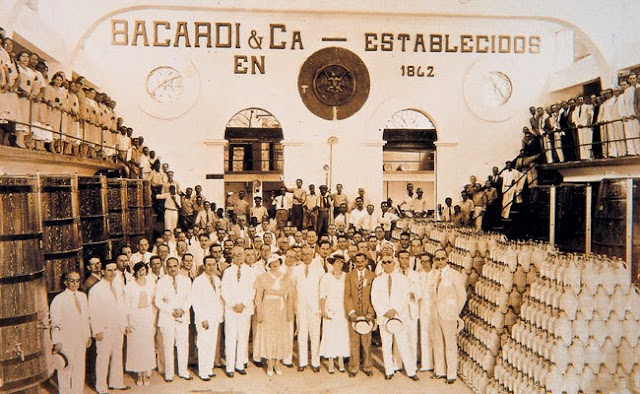6 Fascinating Things You Didn't Know About Tiki Cocktails
Tiki often provokes visions of sandy beaches, cocktail umbrellas and dreams of never-ending vacations.
Until recently, many of the tropical drinks available around the UK over the past few decades have been anything but enticing. Often sickly sweet, neon-hued and blended into oblivion, tiki is, within the last years, finally starting to pull itself out of that cloying rut.
For those who are only familiar with the sugary drinks of sandy-floored huts, it may be difficult to draw the connection between tiki and craft cocktails. Turns out, these beachy drinks have quite the history.
1. Tiki was inspired by Polynesia.
 |
| Beach of St. Thomas bar |
When you picture yourself on the beach of St. Thomas, what do you have in your hand? A Piña Colada or a Mai Tai—perhaps even a Painkiller? Though rum is a popular export throughout the Caribbean, tiki cocktails weren’t originally inspired by the beaches of St. Thomas or Jamaica. Instead, Polynesia, a group of islands scattered throughout the Pacific Ocean, can take the credit for inspiring this category of drinks.
2. Ernest Raymond Beaumont Gantt made tiki popular in the 1930s.
 |
A world traveler and entrepreneur who ended up in California at the tail end of Prohibition, Ernest Raymond Beaumont Gantt is usually credited with launching the drink trend that has now lasted just over eight decades. He opened up his bar, which he called Don the Beachcomber’s, in 1934. After extensive travels to the South Pacific, he decorated the spot with the flotsam and trinkets he’d collected on his travels and put together a menu of drinks made with all kinds of fruit juices. He used rum from the West Indies, which was increasingly easy to find after the demise of the Great Experiment, aka Prohibition. His philosophy? “If you can’t get to paradise, I’ll bring it to you.”
Gantt later legally changed his name to Donn Beach, fully embracing his tiki fatherhood and inspiring others to open up similar tropical establishments. The man did, after all, invent tropical mainstays like the Zombie and the Missionary’s Downfall.
3. Trader Vic’s established its popularity.
Victor Bergeron was one of the most influential tiki lovers inspired by Beach’s Los Angeles paradise. In 1936, Bergeron started serving his own Polynesian-inspired drinks at his bar Trader Vic’s in Oakland, California, and cemented the trend. Though the popularity he inspired for the trend eventually led to the downfall of tiki’s good name, Bergeron never let himself succumb to using excessive amounts of sugar and artificial juice, writing in 1948, “for the life of me, I can’t see why any bar uses anything but pure fresh lemon or orange juice.”
4. The 1980s nearly wiped out the true meaning of tiki.
The garishness of the era that spawned Madonna, shoulder pads and John Hughes movies very nearly spelled the end of tiki as Beach and Bergeron knew it…well, invented it. Due to the ever-growing popularity of both pre-made foods and the tropical drink trend, bartenders began using overly sweetened, pre-made mixes coupled with a shots of sub-par rum—a far cry from the stuff Beach used.
5. Tiki drinks aren't just made with rum.
While rum-based cocktails tend to dominate the tiki scene, it’s not the only spirit that lends itself well to tropical imbibing. Gin, the traditionally straight-laced, botanical spirit used to make classic Martinis, makes a killer Singapore Sling (though not Polynesian, it’s arguable that it still falls under the “tiki” umbrella). The Fog Cutter, another tropical classic, also uses gin, in addition to brandy, rum and sherry. And don’t think it stops there: Tiki cocktails can include everything from absinthe and vodka to a number of flavored liqueurs. While the bases may change, you can always count on one thing: Nearly every tiki drink you try will have a serious kick of booze. Talk about getting your money’s worth.
6. The real thing is making a comeback.
Across the country, new bars with a special appreciation for all things tiki have been opening. From extensive rum collections and a devotion to all things craft, including house-made syrups and fresh-squeezed juices, to the support of the past decade’s resurgence in well-made drinks, these bars have sparked a wide interest in tropical imbibing.








Comments
Post a Comment